Each year, Vernon Cabbagehead works hard to create the best garden in town. With his carefully tended vegetables, he hopes to impress Eudora Brassica, the head of the Garden Club, and win the coveted Blue Ribbon. However, the strain of such intense labor means he takes two vacations during the growing months to restore his tender nerves. Instead of leaving his garden alone during this time, his gardening neighbors may drop by for some impertinent gardening of their own.
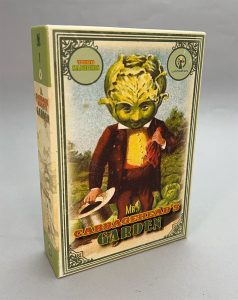
A Day in the Leaf
To start a game of Mr. Cabbagehead’s Garden, remove the three On Holiday cards from the pile of vegetable cards and set them out, side by side. Then shuffle the 45 vegetable cards and deal them out, facedown, evenly on top of the three On Holiday cards. Stack the piles one atop the other to create a single deck of cards to draw from.
From the collection of Neighbors, choose four and place them nearby. Then take the five round counters for each Neighbor and put them in the burlap vegetable seeds bag.
Set three Bees to the side on the hive card and place the remaining three in front of you.

You’re now ready to play.
The Plot Thickens
The goal of the game is to score the 125 points necessary to win the Blue Ribbon at the end of the game. Points are scored for planting vegetables (playing cards) in specific patterns and/or next to each other.
Each turn starts by drawing the top three cards from the vegetable deck and placing them side by side in front of you.
Each card has a large image of the vegetable named, along with four numbers grouped at the bottom of the card.
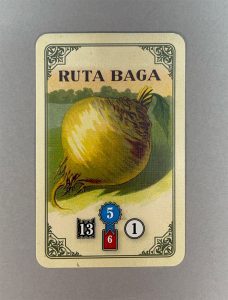
After choosing a vegetable card to plant in your garden, you will discard the remaining two cards. You now need to decide where in your garden to plant your new vegetable.
Your garden plot is a neatly laid out series of three rows of six columns each. If you’re playing without the fancy neoprene mat that I have, you can start your garden in any location, determining your borders as you play. The more challenging version of the game calls for a location for those rows and columns at the start of the game, as created by the mat.
Careful planning is required to score points. In order to be scored, vegetables must be orthogonally adjacent to another vegetable of the same variety—peppers next to peppers, lettuce next to lettuce, etc. Each vegetable planted next to a matching vegetable will score the number in the blue ribbon on each card. Vegetables not placed next to a matching type will not score at the end of the game.
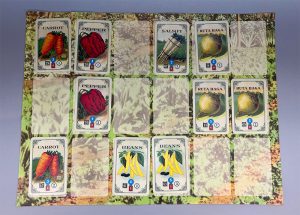
Points can also be scored for gardens that are planted in a manner that pleases the judge, Eudora Brassica.
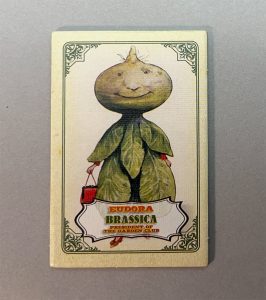
For instance, she is partial to plots where all four corners have the same vegetable (12 points), or the westmost column is planted with one vegetable and the eastmost is planted with another vegetable (14 points). She is particularly taken by gardens where each row has exactly three types of vegetables planted (30 points).
A Risky Bees-ness
But wait! Don’t forget the bees!
You can choose to add any of the three cards dealt out in front of you to your garden, with the following provisos:

- The card to your left gains you a bee if any are left in the reserve
- The card in the center neither gains nor costs a bee to play
- The card to your right requires you to remove a bee from your supply and place it back in the reserve (If you don’t have any bees, you cannot choose this card)
The bees require a bit of management. Not only will their presence in your garden help you to plant certain vegetables (just as their abandonment of your garden will keep you from being able to plant other vegetables) but if you have all six bees in your garden at the end of the game they’re worth an additional six points.
Oh, Kale No You Didn’t!
Twice during the game (after each fifth turn) Mr. Cabbagehead will go on holiday.
Remember that number in the white circle on each vegetable card? Each time you play a vegetable card you’ll also take a number of Neighbor tokens out of the burlap seed bag equal to that circled number. When Mr. Cabbagehead goes on holiday, these neighbors—all fellow gardeners and competitors for that Blue Ribbon—meet in his garden to get a better look at what he’s growing.
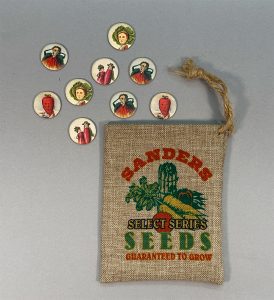
Divide the Neighbor tokens into groups. If there is a clear majority, take that Neighbor’s card and turn it over to see what he or she does in Mr. Cabbagehead’s absence. For instance, The Mayor of Onion Town will take the Turnip, Salsify, or Radish with the highest vegetable number. Callahan O’Corncob will take the only vegetable of its kind in the garden. Lord Carrotbody will take the vegetable with the highest number that is next to a carrot.

However, if there is a tie for the most Neighbor tokens, they are considered to be too busy talking with one another to interfere with the garden.
I Don’t Carrot All
Once you’ve run through all 15 turns, you’ll score all of your vegetable cards adjacent to their same type of vegetable. Then you’ll add in any garden configuration bonuses and/or bee bonuses.
125 points gets you the Blue Ribbon. Score fewer points and you’ll have to settle for lesser ribbons and the polite, yet disappointed smattering of applause from the members of the Garden Club.
Fun from the Get Grow
The first thing I need to mention is the gorgeous art designer Todd Sanders has created for this game. Working from old seed packet illustrations from the 1800s, Sanders’ illustrations for the Neighbors are both whimsical and amusing. They’re inviting, drawing you into the game from the start. The vegetables themselves, while lacking the anthropomorphic character of the Neighbors, work well, presenting all of the necessary information clearly.
Make no mistake about it: this is a push-your-luck game, where you’re trying to mitigate the luck of the draw against the vegetables you desire/can afford (bee-wise) to plant in your garden. The point values of each vegetable type are directly related to how many of that card are in the deck. Do you go for the plentiful Carrots (9 in the deck but only worth 3 points apiece) or do you hold out for the rarer Pumpkins (4 in the deck, worth 6 points apiece)? That Blue Ribbon takes 125 points, and the only way to score that high is to score most of your vegetables more than once.
With only 15 turns, the game lasts exactly as long as it should. Turns go quickly, with each one presenting an interesting choice of both vegetables and garden placement options. Then, just as you’re getting comfortable with your choices, Mr. Cabbagehead goes on Holiday and those infuriating Neighbors come and wreck your plans. (I am genuinely happy when there is a tie for the most Neighbors. I imagine them nattering on with one another while I continue playing.)
By the end of the game you will undoubtedly wish you had another turn or two to add those crucially missing vegetables to your garden. More importantly, though, you won’t feel the game was ever completely out of your control. With a set number of vegetables in the deck and the various bonuses for garden arrangements, there are scoring possibilities on every turn. Maybe not the ones you were hoping for, but possibilities nonetheless.
One of the best things about Mr. Cabbagehead’s Garden is each game takes less than 10 minutes to play. When it comes down off the shelf, I happily play several times in a row, stopping only to change out Neighbors after scoring. That Blue Ribbon is often just out of reach.
If Mr. Cabbagehead’s Garden sounds intriguing, I recommend you give it a grow!
_____________________________
Full Disclosure: I worked with Todd Sanders on revising the rules for his Print and Play redesign of The Hammer of Thor and was credited with co-authorship of the rules for that work.


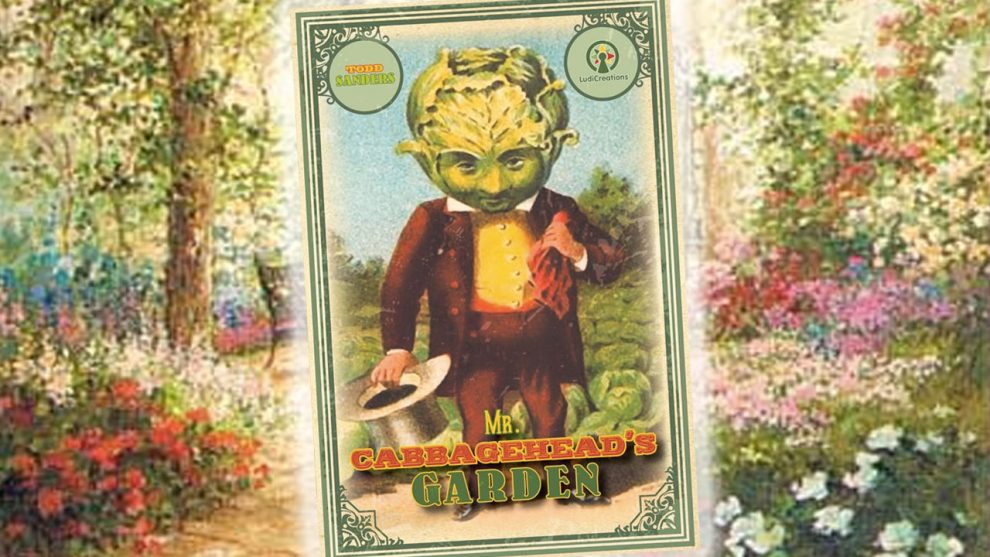



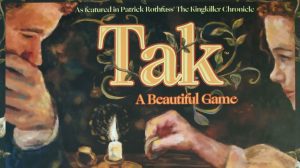





Add Comment